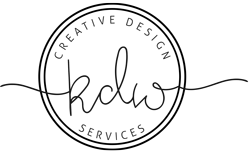Introduction
Brand guidelines, sometimes known as brand style guides, are the rulebook for your brand. They define how your brand presents and communicates itself to the world, creating consistency across all platforms and mediums. Without these essential guidelines, a brand can become disjointed, diluted, and eventually lose its identity. In this article, we delve into the purpose of brand guidelines, guide you through the process of creating them, and provide you with an adaptable template for success.
Table of Contents
What are Brand Guidelines Used For?
Brand guidelines serve multiple purposes, central to which is ensuring brand consistency. By setting specific standards for logo usage, colour schemes, typography, imagery, and tone of voice, a company can ensure its brand is recognized and remembered.
Further, brand guidelines play a crucial role in guiding marketing and communication strategies. They provide a clear and concise roadmap for all public-facing materials, from social media posts to press releases.
Brand guidelines are also a useful tool when onboarding new team members or working with external agencies. They can quickly understand the brand’s ethos and how it should be portrayed, saving time and reducing miscommunication. Lastly, as your brand evolves over time, brand guidelines provide a foundation from which to explore new directions while maintaining the brand’s core identity.
The Anatomy of Brand Guidelines
Typically, brand guidelines cover the following key areas:
- Logo usage: This section describes how and where to use the logo, including appropriate sizes, positioning, and variations. It also explains where not to use it and how to avoid dilution or confusion.
- Colour palette: This lays out the brand’s primary and secondary colours, often including Pantone, RGB, CMYK, and HEX codes. It ensures that the brand’s colours are replicated accurately in all contexts.
- Typography: This part explains which fonts are to be used in different scenarios, along with backup or alternate fonts where necessary.
- Imagery and iconography: This section guides the use of photos, illustrations, and icons in brand materials. It often includes a style or mood guide for images.
- Voice and tone: This crucial section defines the brand’s personality as conveyed through language. It often includes a list of words that resonate with the brand, as well as those to avoid.
- Brand positioning and messaging: This part outlines the brand’s mission, values, and unique selling propositions. It ensures a unified and compelling brand narrative.
How to Create Effective Brand Guidelines
- Understand your brand’s mission, vision, and values: These form the core of your brand guidelines. They guide your branding decisions and ensure your brand remains focused and authentic.
- Define your brand personality: Is your brand quirky, serious, innovative, traditional, friendly, or authoritative? Your brand personality influences your visual and verbal communication.
- Choose your brand’s visual elements: Based on your brand personality, choose colours, fonts, and imagery that reflect your brand’s identity. Consider how these elements will work together to create a unique brand aesthetic.
- Define your brand voice: Your brand voice should align with your brand personality. It influences how you write headlines, body text, social media posts, and everything in between.
- Document the guidelines: Once you’ve decided on all elements, it’s time to compile them into a comprehensive, easy-to-follow document. Include specific examples and use clear, precise language.
- Review and refine: Brand guidelines are not a set-and-forget document. They need to be reviewed regularly and updated as your brand evolves and grows.
Case Study: Excellent Examples of Brand Guidelines
Companies such as Apple, Google, and Airbnb have all set great examples of how brand guidelines should be crafted. For instance, Apple’s brand guidelines are comprehensive yet simple, emphasizing minimalistic design, a clear colour palette, and a distinctive tone of voice. These guidelines ensure that every touchpoint of Apple’s brand communicates the same story, reinforcing their brand identity and positioning.
FREE Brand Guidelines Template
We’re pleased to offer you a customizable brand guidelines template, which covers all the key areas discussed.
[Your Company Name] Brand Guidelines
I. Introduction
- Brief overview of the brand, its history, mission, and values.
II. Logo Usage
- The primary logo and any logo variations.
- Clear space around the logo and minimum size.
- Instructions on how not to use the logo.
- Different versions of the logo (i.e., black and white, colour, reversed out, etc.)
III. Color Palette
- Primary and secondary brand colours with Pantone, RGB, CMYK, and HEX values.
- Instructions on when and where to use these colours.
IV. Typography
- Specific typefaces and font families to be used in headlines, body text, and captions.
- Preferred weights and styles.
- Any additional typographic details like line-spacing, letter-spacing, etc.
V. Imagery and Iconography
- A guide to the visual style of photos and illustrations (e.g., real-life, minimalistic, abstract, etc.)
- Appropriate use of icons, their style, and when to use them.
VI. Voice and Tone
- Description of the brand’s voice (e.g., professional, casual, authoritative, friendly, etc.)
- Examples of the tone of voice in different situations (e.g., marketing collateral, social media, customer service, etc.)
VII. Brand Messaging
- Overview of the brand’s key messages.
- Taglines, slogans, or key phrases used in communication.
- Instructions on how these should be used.
VIII. Do’s and Don’ts
- Clear examples of what is and isn’t acceptable when using your brand elements.
IX. Templates
- Examples of how to apply the brand guidelines to various templates such as presentations, business cards, social media, email signatures, etc.
X. Contact Information
- Details of who to contact within the organization for any further questions or clarifications about the brand guidelines.

Photo by Leeloo Thefirst: https://www.pexels.com/photo/pictures-of-brand-design-and-color-placed-on-wall-7598020/
Remember, this is a live document that should evolve with your brand. It should be reviewed and updated regularly to reflect the growth and changes in the company.
This template is divided into sections for your logo, colour palette, typography, imagery, voice and tone, and brand messaging. Each section provides guidance on what to include, with examples and notes. This template is designed to be a starting point – feel free to add, remove, or change sections to suit your brand.
Key Takeaways
Creating brand guidelines may seem daunting, but the payoff in brand consistency, easier onboarding, and clear communication makes it a worthwhile investment. Remember that your brand guidelines should be a living document that evolves with your brand. Regular review and updating are key to keeping your brand guidelines relevant and effective.
Conclusion
Armed with the knowledge of the purpose and creation process of brand guidelines, it’s your turn to set the rules for your brand’s identity. With our adaptable template, you are well-equipped to embark on this journey. We’d love to hear about your experiences or any questions you might have about creating brand guidelines, so feel free to share them in the comments section below. Happy branding!






